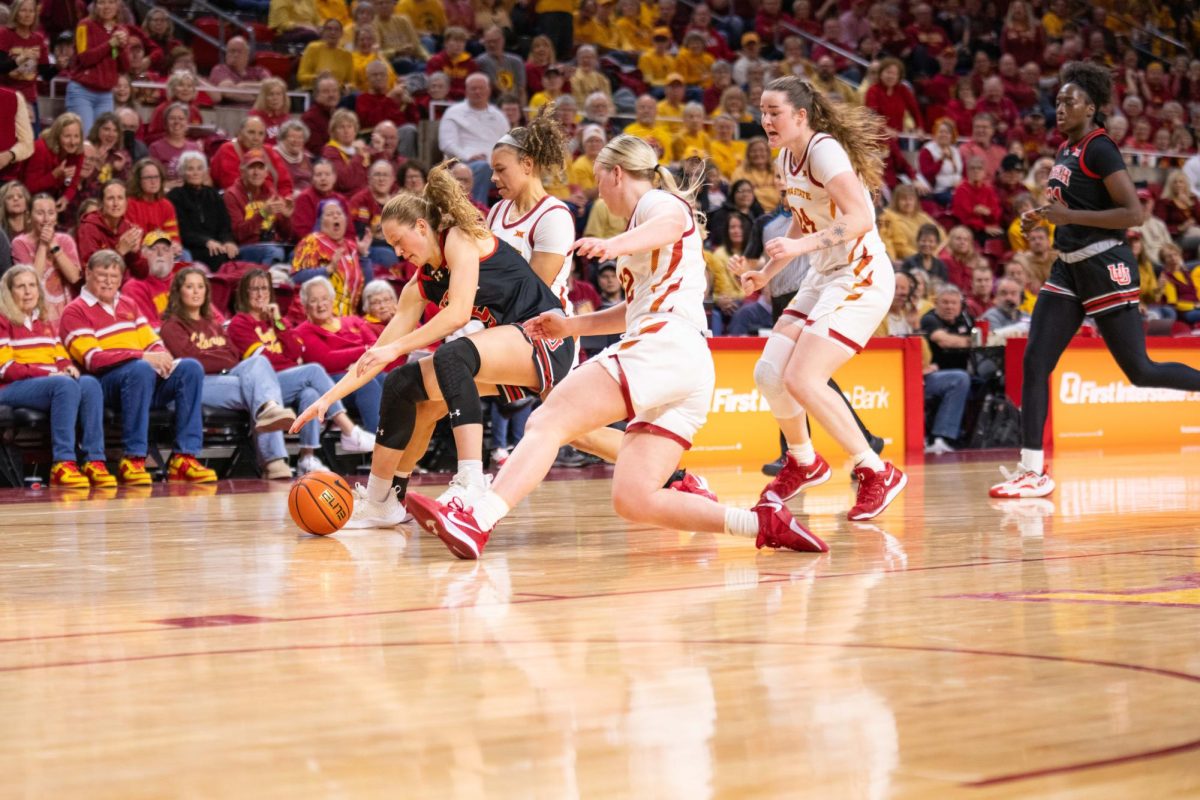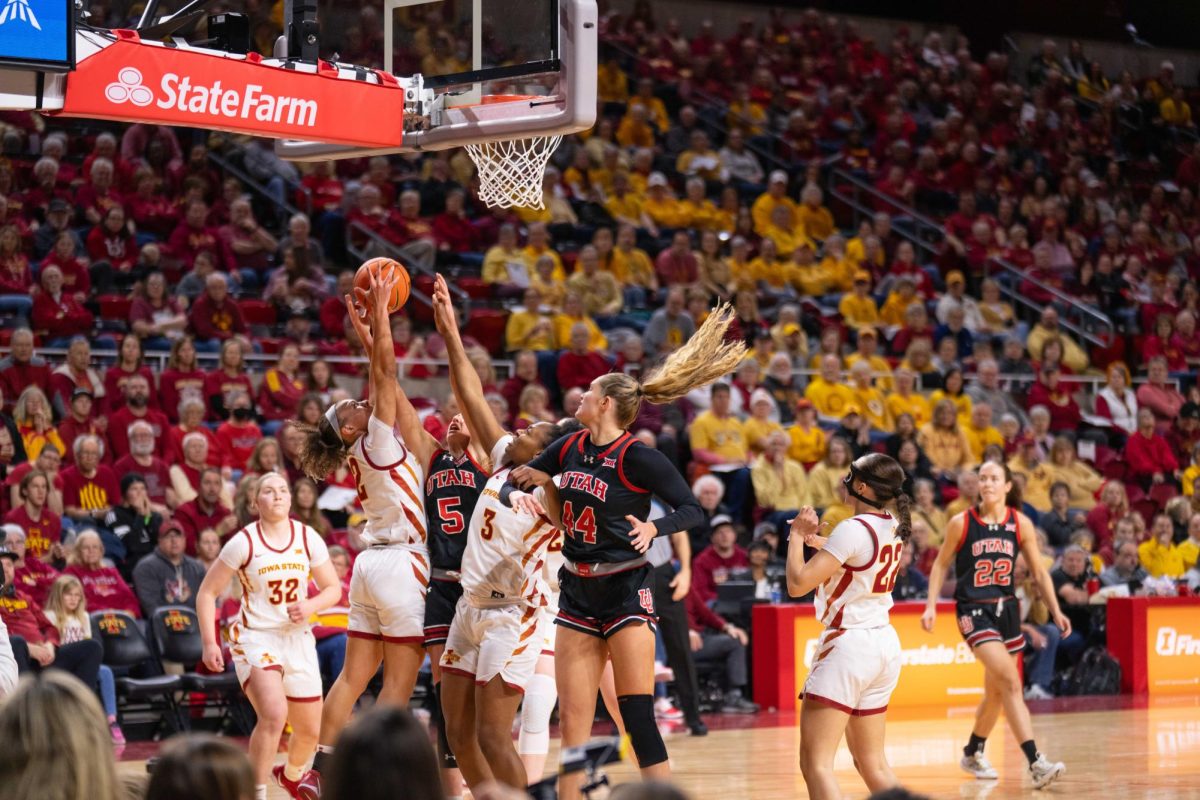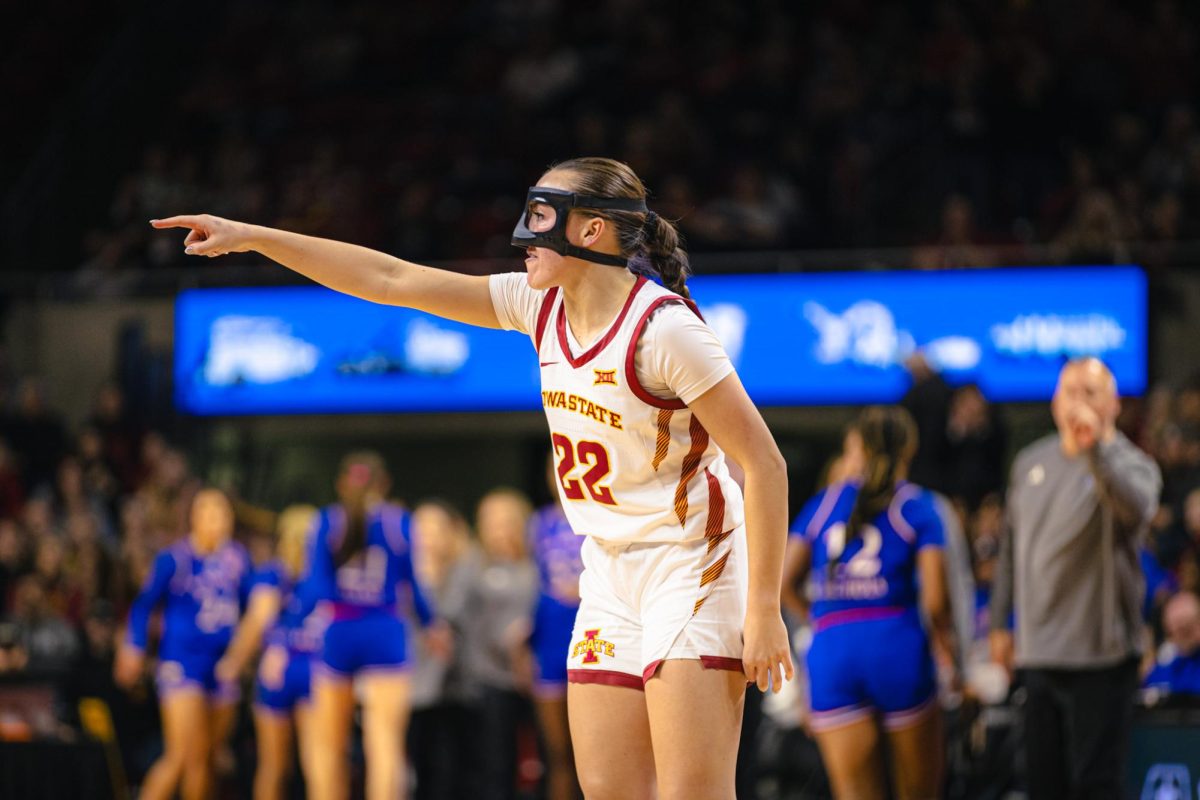A woman realizes her husband is Danny Peterson’s killer
April 30, 2003
Editor’s Note: This is the fourth in a five-part series about the life and death of former ISU student Danny Peterson and how he impacted his family, friends and the detective who pushed everything aside to solve the case. In Wednesday’s segment, Detective Jack Talbot had just begun the search for Danny’s killer, but was hitting only dead ends.
After the red Cougar lead fell through, the South Lake Minnetonka police needed a new theme in their search for the driver who hit Danny Peterson.
Detective Steve Neururer designed a new flyer with a photo of Danny and a headline promising a $10,000 reward. Below it was the phrase, “This Community Will Not Forget Daniel Peterson.” Volunteers helped the officers put up the flyers. Todd Saucier, a carpet-layer by trade, took flyers and posted them — more than 100 in all — wherever he had jobs. Danny’s smile blanketed a 10-mile radius around Excelsior.
“Having Danny’s face in all those windows … that was unsettling,” Pat Peterson, Danny’s mother, says. “But they were an excellent idea.”
Christina Vivar, a young woman from Mound —a suburb seven miles west of the site of Danny’s accident— saw one of the flyers while paying for gas. It was Sept. 4, more than three months after the accident, but when she read about the date and location of the accident, it triggered a memory she had of that night.
The revelation would lead to another hard twist in Christina’s life. She was twice married. Her first husband, an illegal immigrant, had been imprisoned on drug charges. Her second husband, Guido Vivar-Rivera, from Ecuador, was also an illegal immigrant. But he worked two jobs to support her and her 4-year old son from her first marriage. Besides that, her cancer was coming out of remission and in the coming months would require her hip be replaced. Calling the police now would throw her relatively stable life into a tailspin. But, she later told Detective Jack Talbot, she couldn’t have lived with herself without telling them her secret.
Talbot was at home when he got a call that a woman had a tip in the Danny Peterson case. He didn’t get excited. Over the months, he had heard plenty of useless tips. But he called Christina — it was 9 in the evening — to hear what she had to say. Her voice trembled as she told him her story.
On the night of Danny’s accident, Christina was awakened by Guido’s arrival home. He had come back from his job as a cook at the St. Albans Boathouse. He was drunk and upset.
“Something terrible happened — ” he started to say. Then he became quiet.
“What?” she asked.
He sounded as if he wanted to tell her more. But he composed himself before continuing: Someone had thrown a rock at the car and broken the windshield, he told her. That was why he was upset.
Christina thought his behavior was odd but she shrugged it off and went back to sleep, knowing that Guido was emotional when intoxicated. The next morning she saw the hole in the windshield and called the insurance company. She never knew what else happened that night until she saw the flyer.
Talbot asked her some more questions. Christina was “crying her eyes out,” he says, but she was completely forthcoming. She told him all he needed to hear. Then he had to tell her what she had feared:
“I have reason to believe your husband was involved.”
Christina, already in tears, panicked even more. She was still in denial that Guido and Danny were connected. Talbot wanted to see the car, a white 1996 Pontiac Grand Am, for himself. But he was afraid Guido might bolt.
“Promise me you won’t tell him you talked to me,” Talbot said to Christina.
She promised. Talbot believed it was likely, and understandable, that she would tell Guido anyway, but he had to take her at her word. He then called Neururer to the office. It was dark when the two of them drove to the apartment complex where Christina and Guido lived. They saw the white Pontiac but didn’t get too close for fear of being noticed. They came close enough, though, to see stress fractures on the bumper, possibly caused from the impact of hitting Danny, Talbot thought.
The next day Talbot visited the repair shop where Guido took the car to replace the windshield. The worker said Guido told him, contrary to what he had told Christina, a rock that had fallen off a truck he was following shattered the windshield. The worker remembered Guido was nervous and the damage didn’t seem as if it had been caused by a rock. That was enough to make Talbot “100 percent sure” he was on the right track. He then called Christina to tell her his decision to arrest her husband.
“She broke down,” Talbot says. “She completely fell apart.”
‘I have waited three months and three days’
At about 4 that afternoon, Guido got off from work at the Pickled Parrot, a restaurant in Eden Prairie. Talbot and Neururer were waiting for him.
When they pulled him over and arrested him, he was completely surprised — Christina had kept her promise. They questioned Guido in the car but weren’t able to get very far since Guido did not speak English well. They brought him to the station, called in a certified translator, and read him his rights. For the next two hours, they questioned him about the evening of Danny’s accident. Partway through the interview, Talbot stepped out to make a call he still remembers with pleasure.
The phone rang at the Peterson home as Pat was just about to leave for her first grief counseling meeting. She picked up the phone and heard Talbot’s voice:
“I have waited three months and three days to make this call.”
Pat almost fell over. She had to sit down before Jack could continue. He told her all he knew and that he thought for sure Guido was the driver who had hit her son. The news came as an immediate relief to Pat —the driver was not one of their friends— though she and Tim would have to keep it to themselves until Guido was officially charged.
Meanwhile, the interview with Guido was harder than Neururer expected. Speaking through an interpreter limited his range of expression made simple talking back—and-forth a laborious process. And Guido was a reluctant suspect.
“It was exhausting,” Neururer says of the interview. “You really feel drained after an interview like that.”
But these details Guido did admit to: On the night of Danny’s accident, Guido punched out at 11:30 from his cooking duties at the St. Albans Boathouse. He sat at the bar for at least an hour and had at least three to four drinks. That and the cigarettes he smoked were enough, he admitted, to inhibit his driving ability.
At about 1 a.m., he left the restaurant. Excelsior Boulevard was half a mile south. It probably didn’t take him more than a few minutes to reach where Danny and his friends were walking. All he remembered, he said, was seeing three men on the side of the road and then a loud sound and the windshield breaking as he passed them. He told the detectives repeatedly that if he knew he had hit Danny, he would have stopped.
Every time Guido denied knowing that he hit Danny, Talbot had to hold in his anger. As far as Talbot could see, there was no reason for Guido to tell two different stories about the windshield or fail to report the vandalism unless he was lying. Finally, Talbot couldn’t take it any longer and he interrupted Neururer mid-sentence.
“I don’t believe you,” Talbot said, glaring at Guido. “You killed a man.”
Guido, who had kept steady throughout the interview, finally showed some emotion as he broke into a sob.
“I don’t know … I don’t know.”
He never admitted to hitting Danny, but his testimony was enough to justify keeping him in custody, the detectives decided. They were ecstatic, but the celebration was muted. They knew all along all their work could never bring Danny back.
Still, Talbot went home a new man.
“It was like somebody lifted the world off my shoulders,” he says. He spent the evening with his family, discussing the case especially with his daughters, who had paid close attention to it.
“They understood this was a huge thing for me,” Talbot says. “They followed the case with tremendous passion. They understood that Danny Peterson was a human being and this is not how you treat human beings. You don’t just run them over and leave them to lay there.”
Building the case
The next day, Thursday, the police executed a search warrant on the white Pontiac. A dent on the hood indicated where Danny landed as he slid into the windshield. There were still bits of windshield glass all over the inside of the car even three months after the accident. They matched with windshield glass found at the accident and on Danny’s clothing.
The police felt it was an open-and-shut case of vehicular homicide with a maximum penalty of 10 years in penalty as they prepared the evidence against Guido. During this time Talbot received a call from Assistant County Attorney Diane Krenz. She expressed to him her concern that the evidence wasn’t strong enough.
She agreed Guido had been the driver and that he fled the scene. But the charge required Guido be the cause of the accident, either by intoxication or gross negligence. It was too late to prove Guido’s intoxication with a blood-alcohol test. As for his negligence, Krenz believed that since Danny had been intoxicated while walking on the wrong side of a dark road, he might have put himself in unnecessary danger.
Talbot vehemently disagreed. Krenz said she would call back in five minutes to continue the discussion. But Talbot never heard back from her again — a fact he remembers bitterly today (Krenz says she had an appointment at the time).
When Talbot arrived at the county attorney’s office, he learned that Krenz had already drawn up a complaint for felony hit-and-run leading to death — a lesser crime with a maximum prison time of three years. Talbot refused to sign it and persuaded Krenz’s supervisor to charge Guido on both counts.
“Let the jury make the decision,” Talbot says. “I was very comfortable with that.”
Anger and tears
By Friday afternoon, the news of Guido’s arrest had leaked out and the Peterson home was flooded with calls from the media and excited friends and relatives. Pat and Tim, though, already had a vacation planned to Canada and were able to escape the commotion. The arrest had been an emotional relief and the Petersons were grateful the investigation was coming to a close. But it was hard to share the excitement of their friends about Guido’s capture. The Petersons wanted justice, but no amount of punishment would relieve their loss.
“People have been good throughout this, but I think there was a little too much like this should make us feel good in a lot of people’s messages to us … that somehow this would be a great comfort to us,” Tim says.
Chris heard the news from a friend before Pat was able to reach him. He had always had hope that the driver would eventually be caught but the news shocked him as he was making plans for that Friday night. Whatever joy to be had from the news was quickly overtaken by emptiness. And rage.
“Who the hell is this guy?” Chris asked himself.
Mark learned about Guido’s arrest earlier that morning. He had to leave work early — his head was nowhere but with Danny and he struggled to keep it there and not on the man who had killed him. He remembers talking to Chris that night on the phone. Chris was upset, crying over Danny’s death and wanting the worst punishment for Guido. It was a struggle for Mark himself to stay positive.
“I didn’t have anything except … anger,” Chris says. “That’s pretty much the best word I could think of toward him.”
About this series
This series was inspired by a Minneapolis Star-Tribune July 12 article headlined, “Who struck down Danny Peterson? A detective won’t let go,” about a Minnesota police department and its almost obsessive search for the driver who killed Danny.
The Daily learned from the Star-Tribune and the South Lake Minnetonka Police Department in February that the driver had been arrested and sentenced. This prompted the Daily to find out the complete story behind what happened to Danny.
The events surrounding his life and death is derived from the accounts of 10 of the major people involved, including Danny’s family and the detectives working his case. The Daily also visited the Peterson home and the spot where Danny’s accident took place.
Articles from Minnesota newspapers, the transcript of the sentencing hearing, the text of Danny’s eulogy and victim impact statements to the judge were also sources for this story.






